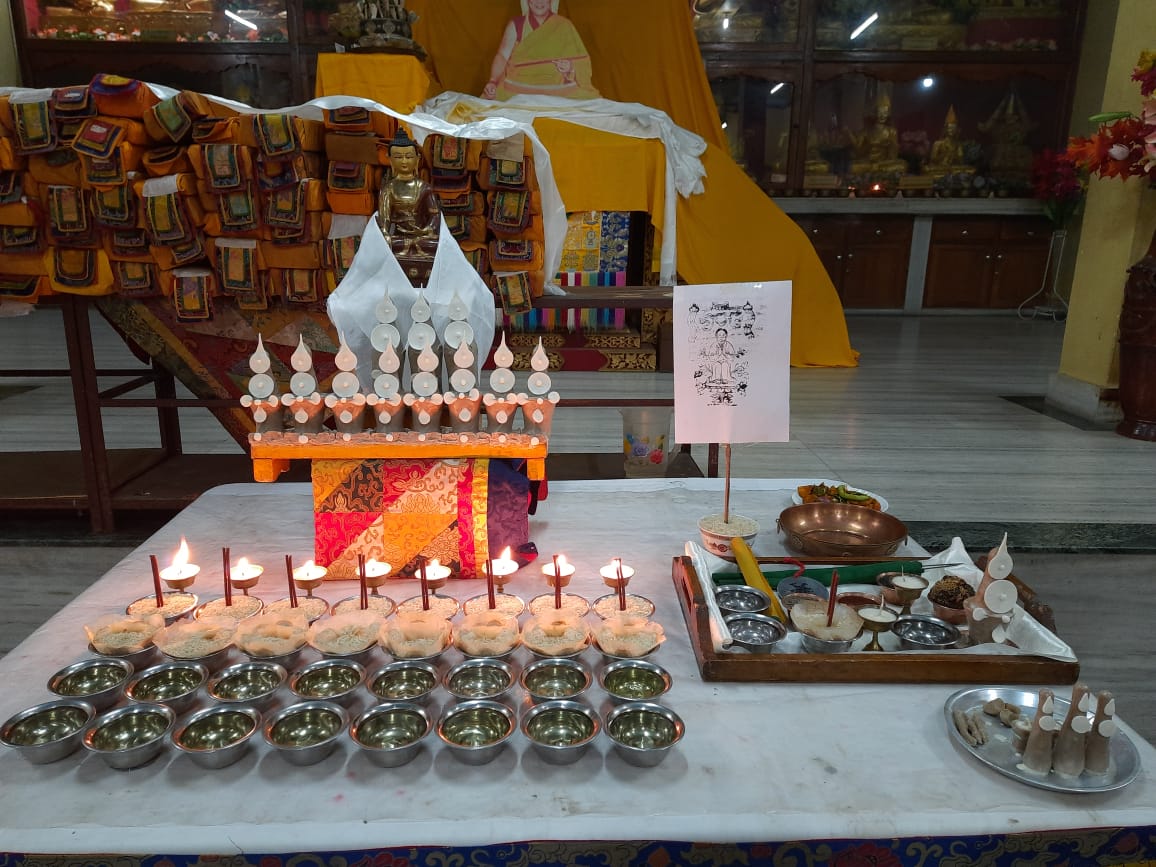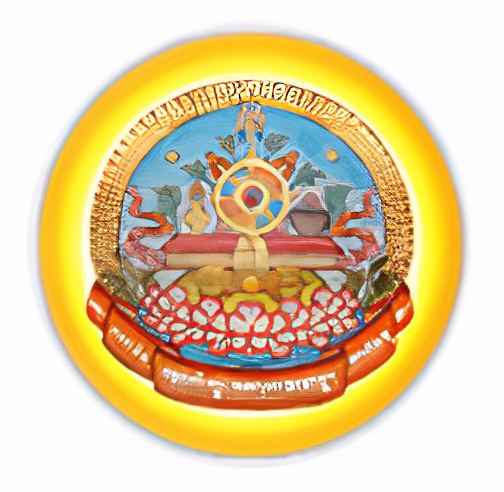Sed Gyued Monastery
Medicine Buddha Jangwa སྨན་བླ་མདོ་ཆོག་ཡིད་བཞིན་དབང་རྒྱལ་།
Medicine Buddha Jangwa སྨན་བླ་མདོ་ཆོག་ཡིད་བཞིན་དབང་རྒྱལ་།
Couldn't load pickup availability
Medicine Buddha is popularly known as Bhaisayaguru in Sanskrit. He is best described in the Medicine Buddha sutra as the Buddha who took 12 great vows after the attainment of the Enlightenment. He is also regarded as the Buddha of the eastern pure land of Vaiduryanirbhasaor Pure Lapis Lazuli. Mostly, he is attended by two other bodhisattvas, Suryaprabha and Candraprabha, symbolizing the light of the sun and the light of the moon respectively.
In this Buddhism, he is regarded as the Buddha of healing and medicine. Therefore, the Buddhist monks and followers venerate the Buddha with the purpose to ease out one's illness and suffering. They also practice Medicine Buddha's healing method to increase healing powers for oneself and others.
In Chinese Buddhism, the Buddhists recite the mantra of Medicine Buddha to overcome mental, physical, and spiritual problems. Not only the mantra, but the people also recites the name of the Medicine Buddha. But the practice in the Tibetan Buddhism is quite different. It is seen that the practitioner allows the patient to recite the long Medicine Buddha mantra 108 times over a glass of water. After the completion of the recitation, the patient is allowed to drink the water believing that the water is now blessed by the power of the mantra and the Medicine Buddha. This practice is continued until the illness is cured. These practices have conducted either seating in front of the Medicine Buddha statues or in calm and peaceful place.
Due to the beliefs of having healing capacity, most of the people house Medicine Buddha statues in their prayer room. It is believed that by placing the Medicine Buddha statues at their home, the healing powers of the family members are increased and negative powers will not be able to enter the house.
Regarding the iconography of the Medicine Buddha, basically, Medicine Buddha is portrayed in the seating posture, Dhyana Aasan. In this posture, he is seated comfortably in the lotus petal pedestal with leg crossed and the back side of both the feet is faced upwards. He holds a Lapis Lazuli colored jar of medicine in his left hand resting comfortably in the lap. The left hand is portrayed with the palm upward which symbolizes meditative stability. His right-hand holds the stem of the Aruna fruit or Myrobalan between thumb and forefinger which rests on his right knee. It is believed that this plant represents all the best medicines in the world. The deep meaning of the right hand is the symbolic representation of the eradication of suffering through the means of relative truth. He wears the monastic robe which covers the shoulder but open in the chest area. Like other Buddha statues, statues of Medicine Buddha also hold Ushnisha in the head and has elongated earlobes.
There has been observed variation in the Chinese iconography of Medicine Buddha statue. In Chinese iconography, Medicine Buddha sometimes holds a pagoda symbolizing the ten thousand Buddhas of the three periods of time. Along with seating posture, Medicine Buddha is also portrayed in the standing posture along with his two companions, Surya Prabha and Chandraprabha.
While depicting Medicine Buddha in Buddhist arts, he is depicted with blue skin color with the halo behind the head. The blue color is associated with the master healing stone, Lapis Lazuli.








